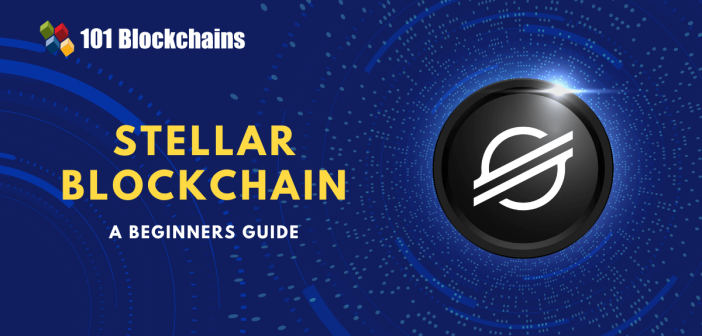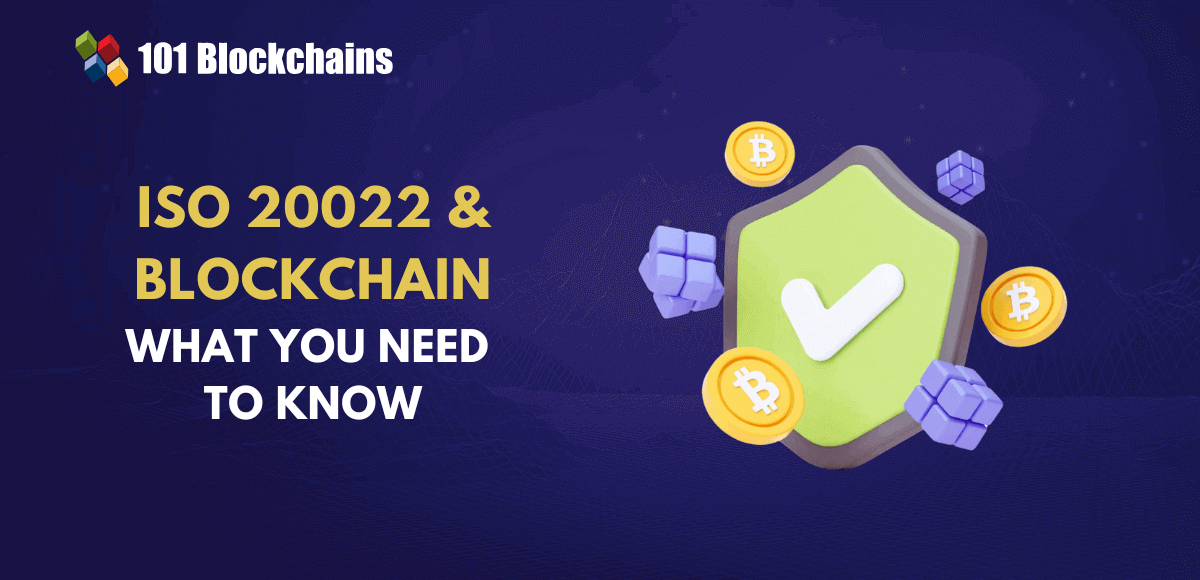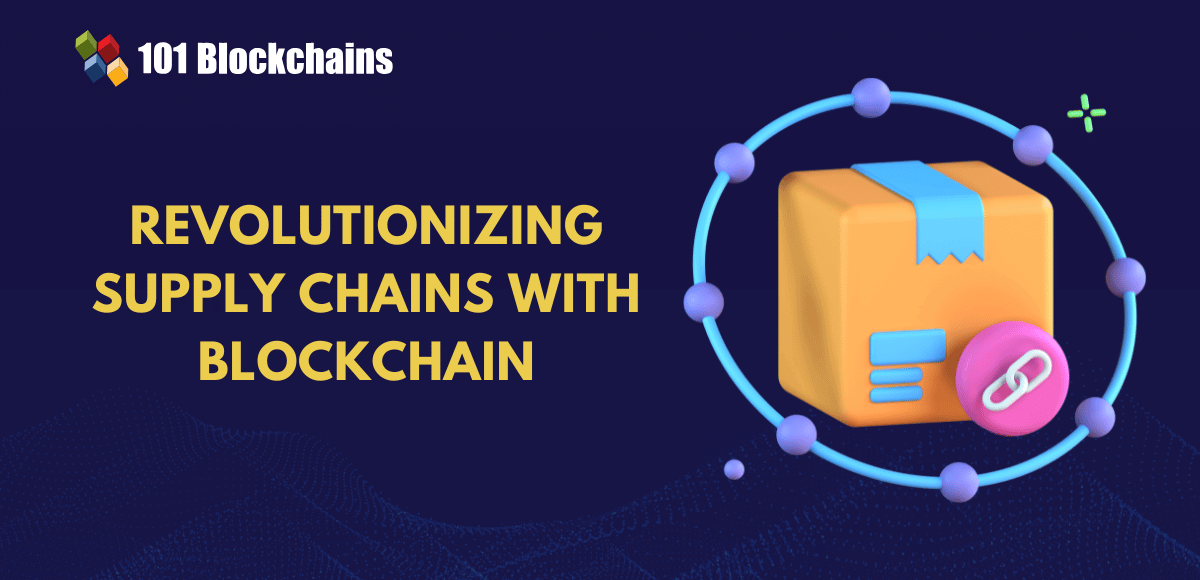Learn how blockchain truly works, master key definitions, and uncover what makes smart contracts so "smart." Dive into the fundamentals, gain valuable insights, and start your blockchain journey today!

- Blockchain
James Howell
- on November 25, 2022
Stellar Blockchain – A Complete Guide for Beginners
Blockchain has evolved into a somewhat common term from being one of the most misunderstood and ambiguous terms in technology. Many businesses, people as well as governments have adopted blockchain technology with product improvements. If you have arrived here looking for a Stellar blockchain tutorial, you must know about the impact of blockchain. The humongous growth of Bitcoin blockchain prompted many other projects to replicate the exact model of success.
However, many of the “inspired” blockchain projects could not achieve the same level of success and recognition as Bitcoin. The Stellar blockchain has proved its potential as one of the worthy successors of Bitcoin in the crypto market, thereby garnering attention from market participants. The following post offers an introduction to the Stellar blockchain and helps you understand how it works.
Build your identity as a certified blockchain expert with 101 Blockchains’ Blockchain Certifications designed to provide enhanced career prospects.
Definition of Stellar Blockchain
One of the first questions you must ask in guides to Stellar blockchain would refer to its definition. The answers to “what is Stellar blockchain” would help in identifying what it means for blockchain users. Stellar blockchain is the open-source, decentralized P2P framework useful for connecting people, banks and payment systems for facilitating faster trade and financial transactions.
You can also think of Stellar as a payment protocol developed on the foundations of distributed ledger technology. Stellar could facilitate faster, cross-border transactions between selected currency pairs. Stellar crypto is considerably similar to many other popular blockchain-based cryptocurrencies. Stellar Lumens, or XLM, serves as the native digital currency for facilitating different operations across the blockchain network.
Stellar vs. Stellar.org
The discussions on Stellar blockchain also draw attention to the difference with Stellar.org. On the one hand, you have the Stellar network, which works as a distributed ledger technology for facilitating financial transactions. It is completely open source and distributed while remaining under community ownership.
Stellar.org, on the other hand, represents the Stellar Development Foundation, a non-profit organization. The Stellar Development Foundation works towards encouraging financial inclusion alongside the development of tools and social initiatives pertaining to the Stellar network. Stellar developers script the code for the Stellar network while the technology remains completely free from the control of Stellar.org.
Get familiar with the terms related to blockchain with Blockchain Basics Flashcards.
Origins of Stellar Blockchain
The guide to stellar blockchain explorer also calls for attention to the origins of the Stellar blockchain. It has developed as a hard fork from the Ripple blockchain, created from the ideas of Jed McCaleb, a Ripple co-founder. As a hard fork of Ripple, Stellar has some notable similarities with it, such as faster money transfer and lower costs. On the other hand, it is also important to notice certain differences between Stellar and Ripple.
- First of all, the consensus mechanism in the Stellar blockchain is known as the Stellar Consensus Protocol or SCP. On the contrary, the consensus system of Ripple is referred to as the Ripple Protocol consensus algorithm.
- Stellar follows an open-source architecture, while Ripple has been identified as a closed system.
- Stellar blockchain also emphasizes services for banks, loan lending institutions, payment processing partners, and many other players in financial services. On the other side of the spectrum, Ripple maintains a focus on popular banks only.
Working of Stellar Blockchain
The answers to ‘how does Stellar blockchain work’ would also serve as one of the important highlights in a guide to Stellar blockchain. As compared to different cryptocurrency networks using Proof of Work or Proof of Stake for consensus mechanism, Stellar uses its own consensus protocol.
The Stellar Consensus Protocol, or SCP, was created by the Stellar Development Foundation. It works on reducing the dependency on miners for network security by employing a Federated Byzantine Agreement or FBA algorithm. The FBA algorithm utilizes quorum slices or specific portions of network resources for validating transactions.
Every node in the Stellar XLM crypto blockchain network selects a collection of credible nodes for validating transactions. Upon approval of the transactions by these nodes, you can add them to the blockchain ledger. The consensus process helped in increasing the speed of transactions on the Stellar network. It could process around 1000 transactions per second effortlessly.
Furthermore, transaction fees are gradually reduced in comparison to other protocols. At the same time, it also allows flexibility for anyone to run a node in the network with the help of Stellar Core software. Users don’t have to incur heavy expenses on mining hardware, thereby indicating the cost-efficiency of Stellar blockchain. However, the working of Stellar blockchain also calls for a trade-off in terms of expressing trust in the system itself.
Practical Description of How Stellar Works
The discussion on ‘what is Stellar blockchain’ would also call for a practical outline for its working. Servers or nodes in the Stellar distributed network run the Stellar Core software, with every server subject to maintenance through multiple organizations and people. Stellar Core helps maintain a local copy of the network ledger ensuring communication and synchronization with other servers.
Stellar resolves the need for depending on miners by adopting the Stellar Consensus Protocol or SCP. As you must have noticed, SCP helps in achieving consensus without depending on closed systems for accurate recording of financial transactions. Stellar claims that SCP is a trusted and secure consensus mechanism with four prominent traits such as low latency, decentralized control, asymptotic security, and flexible trust.
From a practical perspective, the description of ‘how does Stellar blockchain work’ could help you obtain insights about using it in real life. You would need an account to interact with the Stellar network. Each account features a public key alongside a secret seed phrase, accompanied by public key cryptography for ensuring transaction security. Subsequently, you must upload funds into the anchor on Stellar blockchain, which is a trusted entity you can choose for holding your deposit.
It also helps in issuing virtual credit to the user account on Stellar network. The anchors serve as a bridge between the Stellar blockchain and existing cryptocurrencies. Interestingly, the anchors primarily include banks, remittance companies and savings institutions. After uploading required funds to the anchor, you could complete an almost near-instant transfer for the network.
Want to get an in-depth understanding of crypto fundamentals, trading and investing strategies? Enroll now in Crypto Fundamentals, Trading And Investing Course.
Important Features of Stellar Blockchain
The features of Stellar blockchain would also account for a notable highlight in an introduction to Stellar. You can find new features, such as the SCP making a significant impact in the world of blockchain. The following features of Stellar could tell a lot about its potential for the blockchain and crypto ecosystem.
-
Speed and Scalability
The popularity of Stellar blockchain tutorial has increased profoundly in recent times due to the improvements it offers. As compared to popular blockchain networks such as Ethereum and Bitcoin, Stellar aims to resolve the problems with scalability, speed and number of transactions. Stellar blockchain features a completely decentralized, open-source database with multiple diversified nodes taking responsibility for entering transactions on the blockchain.
It also takes on the responsibility of validating transactions on blockchain networks. Verification of transactions becomes easier with Stellar through the unique consensus protocol, i.e., SCP. Although each transaction could take almost 3 to 5 seconds for verification on Stellar, it is better than other blockchains. As a result, it could help in ensuring speed as well as scalability effortlessly.
Start your blockchain journey Now with the Enterprise Blockchains Fundamentals
-
Limited Token Supply
The Stellar crypto token, Lumen, is one of the crucial highlights in understanding how they work. You would find two distinct blockchains, commonly with one featuring a limited cap on native tokens supply and the other doing the opposite. Stellar falls in the category of blockchains which offer a capped supply. Upon the launch of the Stellar network, around 100 billion Lumens were spread into circulation through mining.
In addition, it also added the native tokens into the supply to increase the pool by 1% on average every year. Subsequently, the community also voted in opposition to the plan for increasing the supply itself by 1%. Subsequently, the network had to deploy a new project to reduce the supply of Lumens to 50 billion from 100 billion. It would not mint additional coins, thereby placing a cap on the supply at 50 billion.
Excited to learn the basic and advanced concepts of ethereum technology? Enroll Now in The Complete Ethereum Technology Course
How to Use Stellar Blockchain?
The detailed outline of basics for Stellar blockchain alongside its work provides the ideal foundation for finding out how to use the blockchain network. Most of the operations of the Stellar blockchain bear similarities to that of other popular decentralized blockchain networks. However, it is also important to navigate the intricate and subtle nuances of using Stellar blockchain in real life.
The answers to ‘how does Stellar blockchain work’ offer detailed insight into the components, such as the Stellar Consensus Protocol or SCP, the ledger system, anchors, and distributed exchanges. You have figured out how they can play a crucial role in facilitating the network’s operations. Now, let us see how they can help you make the most of Stellar blockchain and its functionalities.
-
Ledger System
The public ledger of the Stellar blockchain offers an open and transparent record of transactions visible to any individual on the network. The public ledger also takes on the responsibility of storing two important information pieces, such as account balance and the buy and sell operations on balance.
-
Stellar Consensus Protocol
The driving force and the unique highlight of Stellar would point at the Stellar Consensus Protocol or SCP. Users need to note that they can participate in the Stellar consensus process by installing the Stellar Core software. You can achieve faster transaction finality with the help of the SCP.
-
Anchors
Anchors, as already described, take on two important tasks. Users can rely on them to hold their deposits or issue credits. Anchors could be any type of financial service entity or individual and work as the bridge between Stellar and other cryptocurrencies. All the transactions on Stellar are represented as credit issued by anchors.
-
Distributed Exchanges
One of the most noticeable highlights for a Stellar blockchain explorer or user would also draw attention to distributed exchanges. The exchanges work as marketplaces for purchasing and selling different currencies and virtual assets. For example, the order book in the Stellar ledger would maintain a currency/issuer pair for addressing different purchase and sales offers.
Curious to learn about blockchain implementation and strategy for managing your blockchain projects? Enroll Now in Blockchain Technology – Implementation And Strategy Course!
Transactions on Stellar Blockchain
The distributed exchanges on Stellar blockchain work through three distinct approaches for facilitating transactions. Here are the three notable types of transactions on Stellar.
-
Indirect Transactions
Lumen could facilitate indirect transactions, and the exchange finds individuals who want a specific currency in return for LUMENS. For example, if you want to exchange USD with the Euro, then the exchange would find someone who wants USD in return for the LUMENS. Once they complete the transaction for USD with LUMENS, you can find someone who wants LUMENS for Euro and complete the transaction.
-
Peer-to-Peer Transactions
Peer-to-peer transactions involve the distributed exchange finding the right buyer/seller pair. It follows the order book model and matches offers for completing transactions.
-
Indirect Chain Conversion
The indirect chain conversion is one of the final highlights of the Stellar crypto ecosystem, as it works when the other two types of transactions fail. Indirect chain conversions start with exchanging USD for another currency, such as INR, which is then converted into other currencies before converting it into Euros.
Get familiar with the terms related to cryptocurrency with Cryptocurrency Flashcards
Native Token of Stellar
The outline of the Stellar blockchain would remain incomplete without focusing on Stellar XLM crypto or the native token, i.e., LUMENS. LUMENS is the native token for the Stellar blockchain network and is important for facilitating all operations on the blockchain. Around 100 billion tokens were sent into circulation with an annual inflation rate specified at 1% for maintaining consistent supply.
The native token, LUMENS or XLM, could address two distinct purposes, such as preventing spam and enabling multi-currency transactions. Lumens can help in covering the transaction fees on the Stellar network alongside ensuring maintenance of minimum account balances. As a result, it can ensure that the network never gets overwhelmed. Lumens could also serve as a bridge between multiple currencies, thereby enabling faster transactions with two different cryptocurrencies.
Special Highlight of Stellar
The introductory overview in this Stellar blockchain tutorial reflected on many important aspects of Stellar. However, it is also important to seek the special highlights which make Stellar unique in its own right. You can access a broad assortment of services in Stellar blockchain, which you could find in a normal bank, albeit with a few key differences. In addition, transactions accompany lower fees and better processing times in comparison to traditional banks.
Interestingly, Stellar offers these services with a different approach in comparison to various crypto projects. What makes Stellar blockchain special? Stellar blockchain focuses on establishing a digital economy with more inclusiveness. With the assurance of low-cost financial services to people worldwide, Stellar grows with the vision of maximizing the individual potential for earning and fighting poverty.
Start learning Blockchain with World’s first Blockchain Career Paths with quality resources tailored by industry experts Now!
Final Words
The guide to Stellar blockchain and its working reflect profoundly on architectural components and new improvements. You have the new Stellar Consensus Protocol or SCP as a prominent highlight for defining the way Stellar works. In addition, the discussion on how Stellar blockchain work also reflects on the role of anchors, the public ledger, and distributed exchanges. Most important of all, Stellar blockchain does not compete with other popular networks for market share. On the contrary, it aims to achieve complete financial inclusion for people worldwide. Learn more about the Stellar blockchain and its working in practice now.
*Disclaimer: The article should not be taken as, and is not intended to provide any investment advice. Claims made in this article do not constitute investment advice and should not be taken as such. 101 Blockchains shall not be responsible for any loss sustained by any person who relies on this article. Do your own research!






